Abstract
Stimulus control technology was applied to the instruction of fraction ratio (e.g., ⅕) and decimal (e.g., 0.20) relations, with 7 students who demonstrated difficulty in fraction and decimal tasks. The students were trained to match pictorial representations of fractions (B comparison stimuli) to printed counterpart fraction ratios (A sample stimuli), and to match printed decimals (C comparison stimuli) to pictorial representations of counterpart quantities (B sample stimuli). Posttest performance by all participants indicated the emergence of equivalence relations between fractions represented as ratios, decimals, and pictures. Limited generalization of fraction—decimal relations was observed.
Keywords: academic behavior, stimulus equivalence, generalization, children
Full text
PDF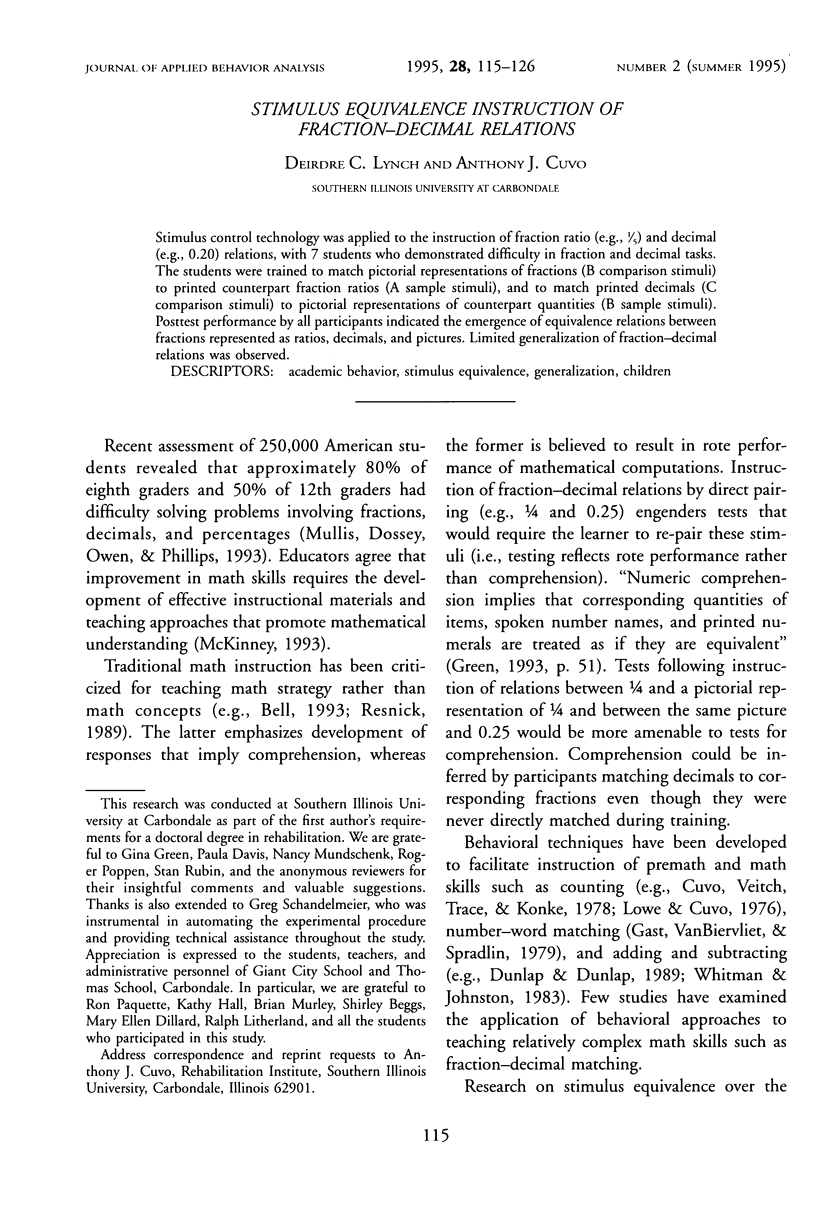
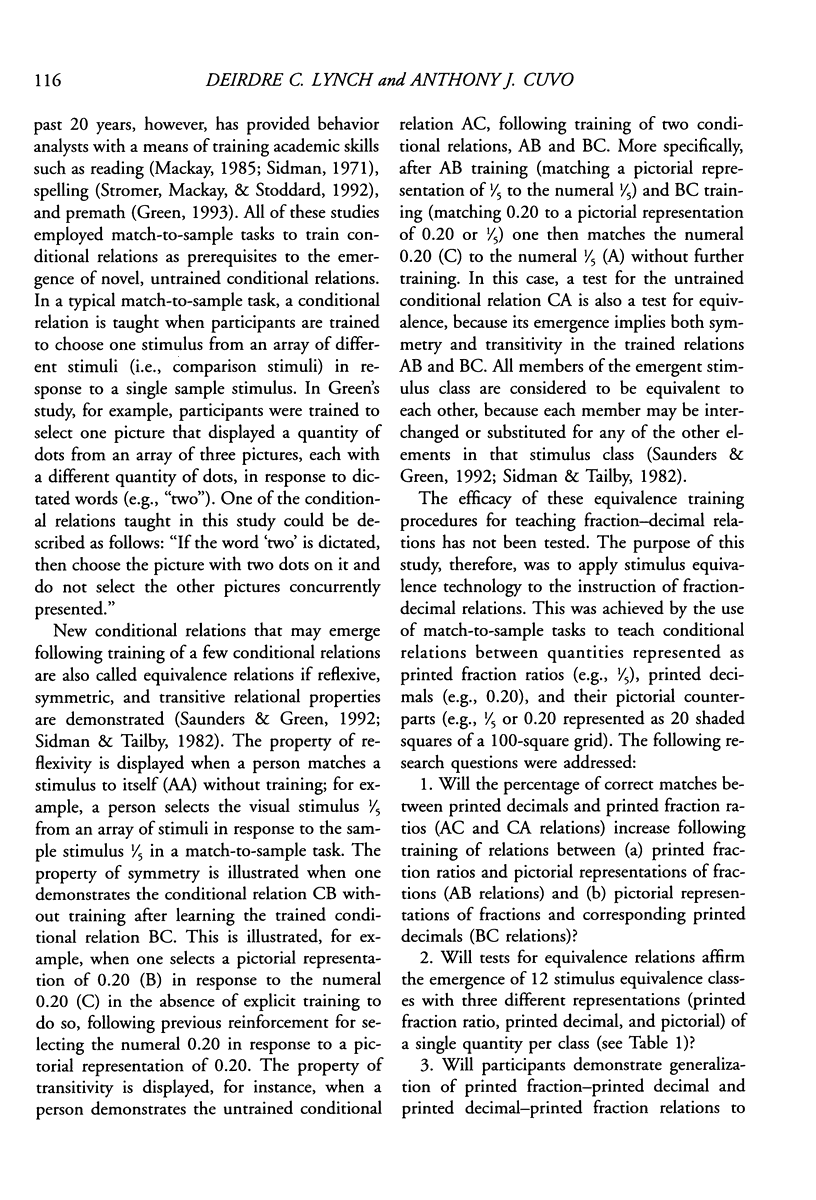
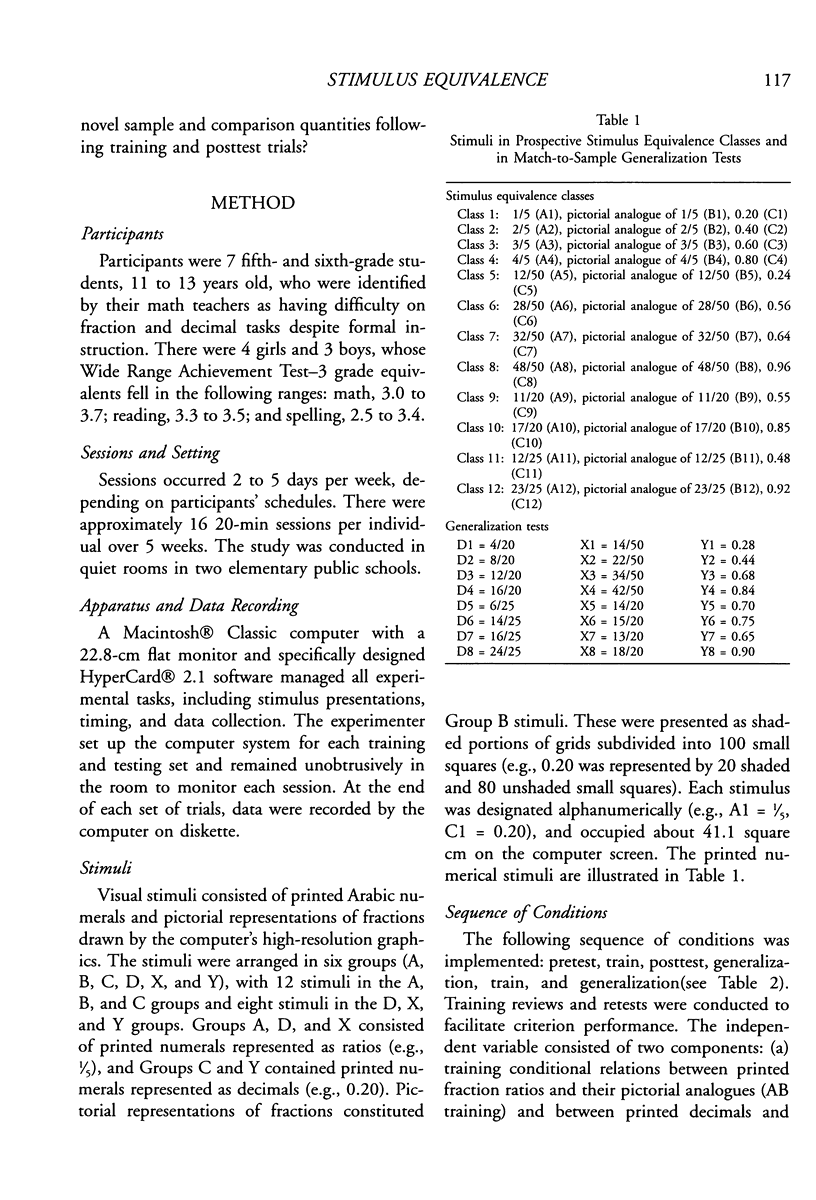
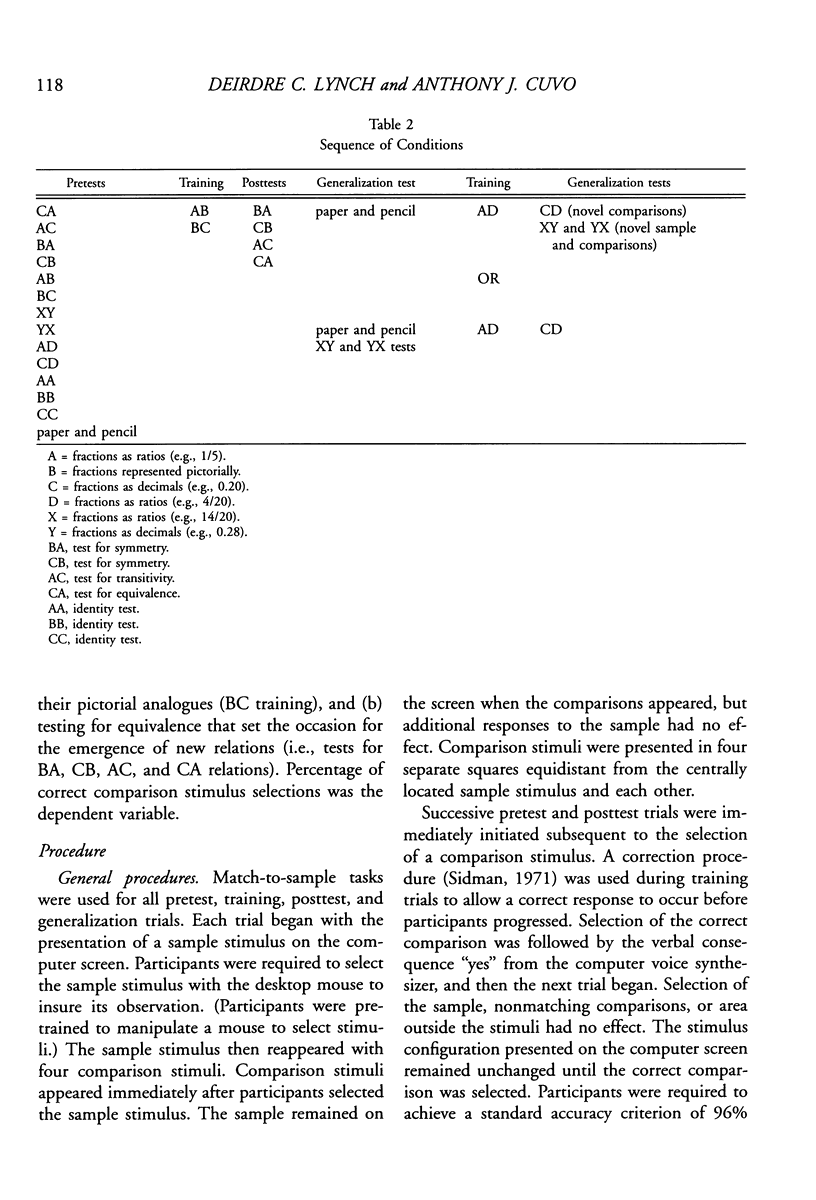
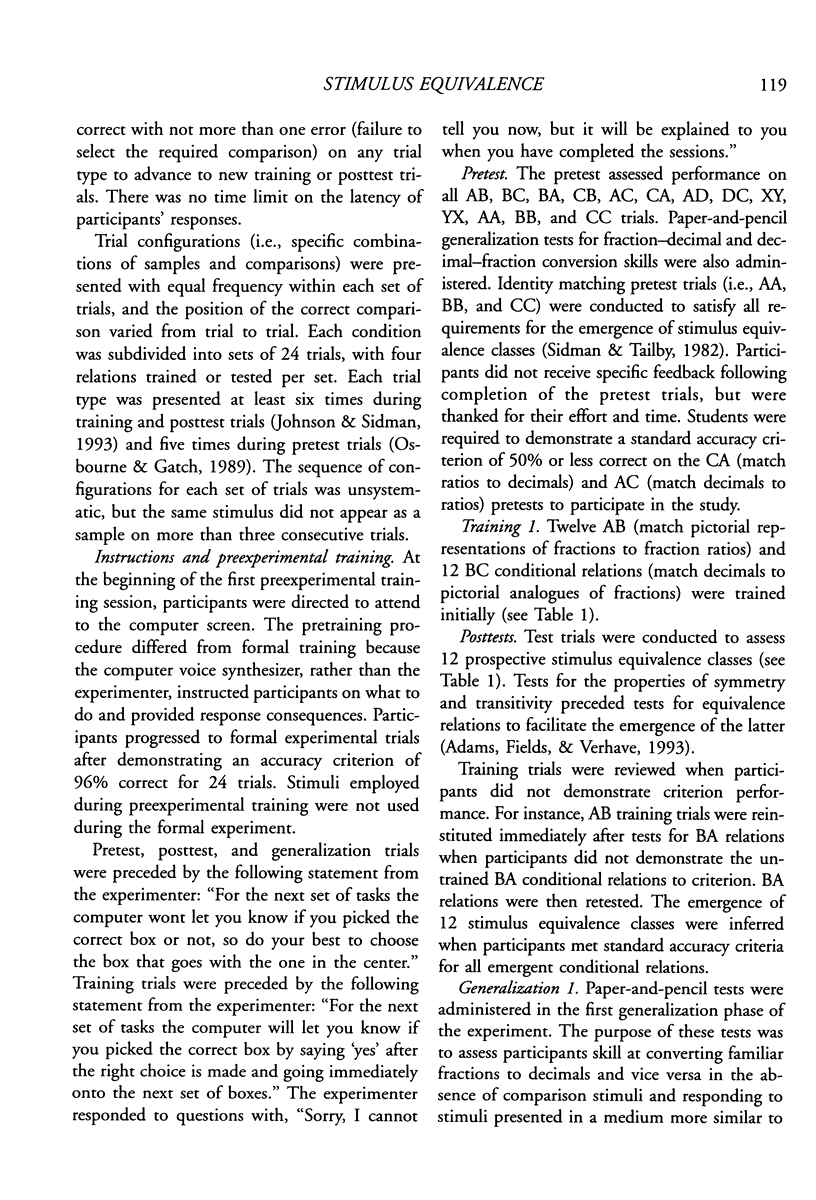

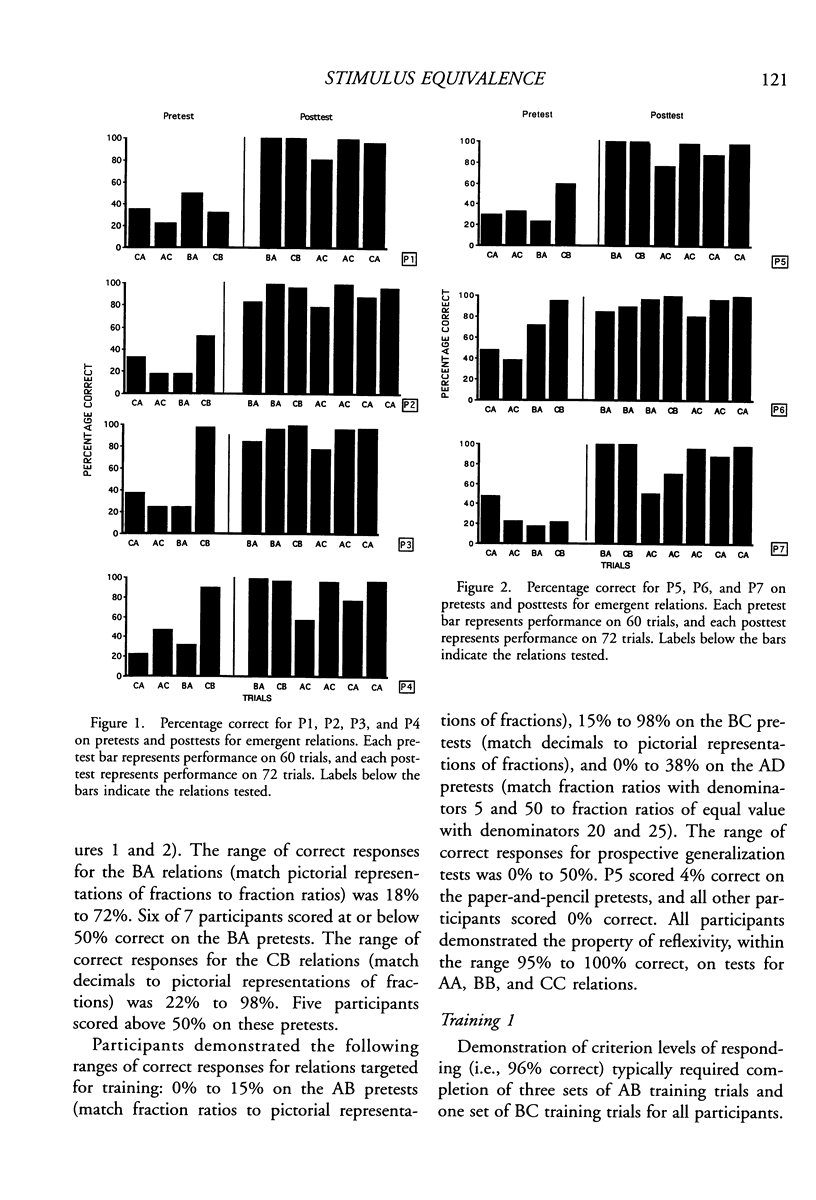
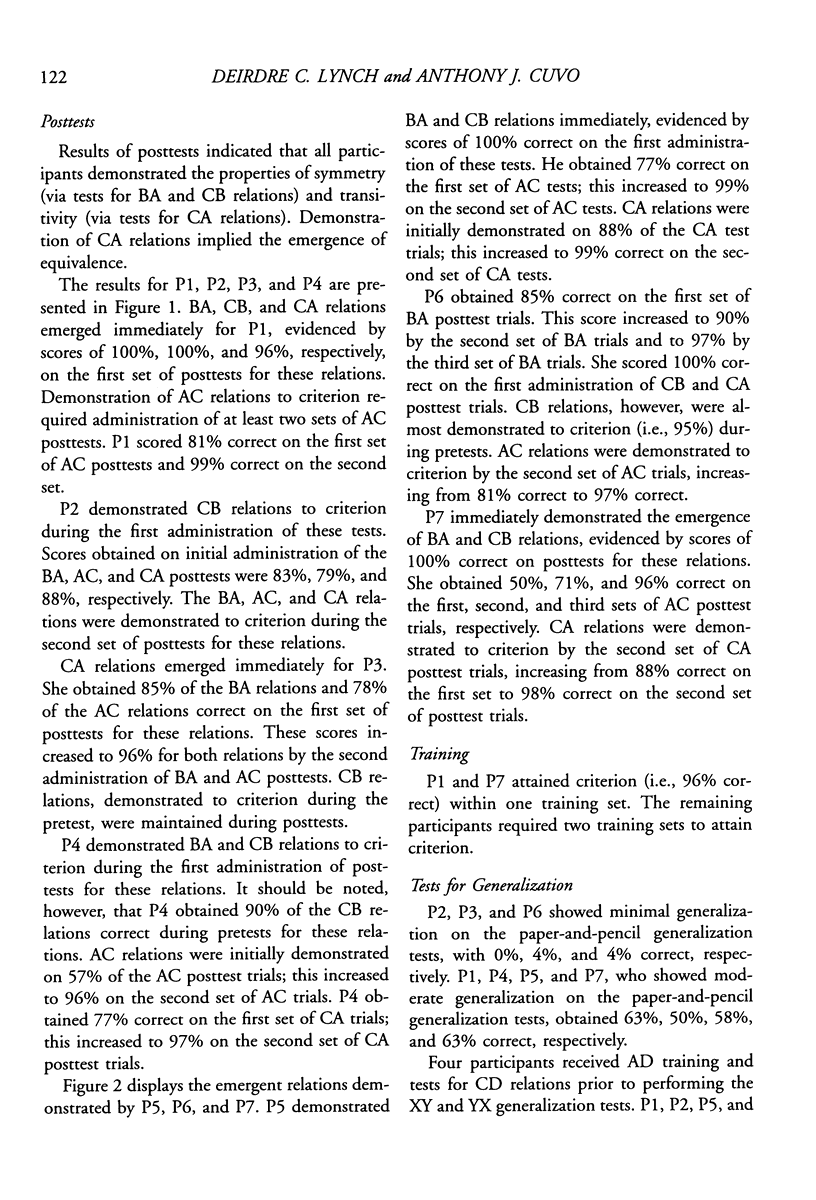
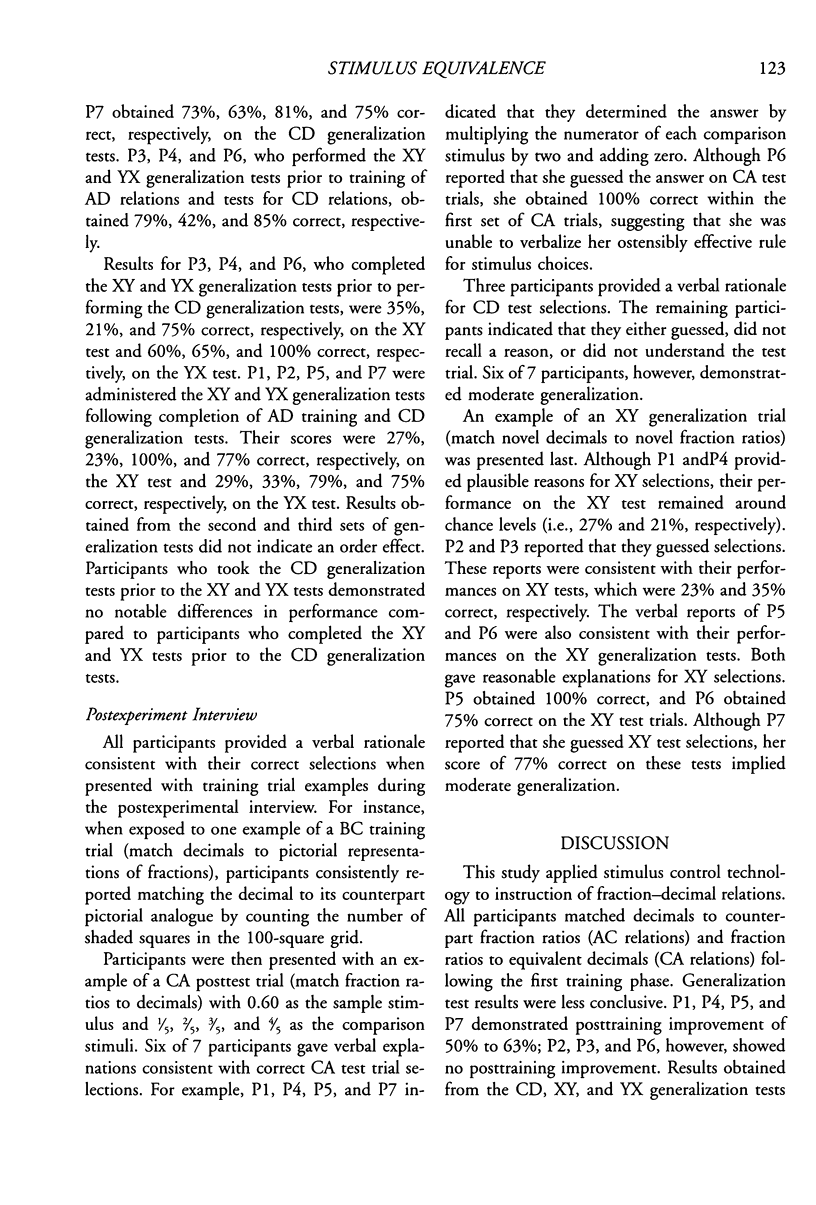
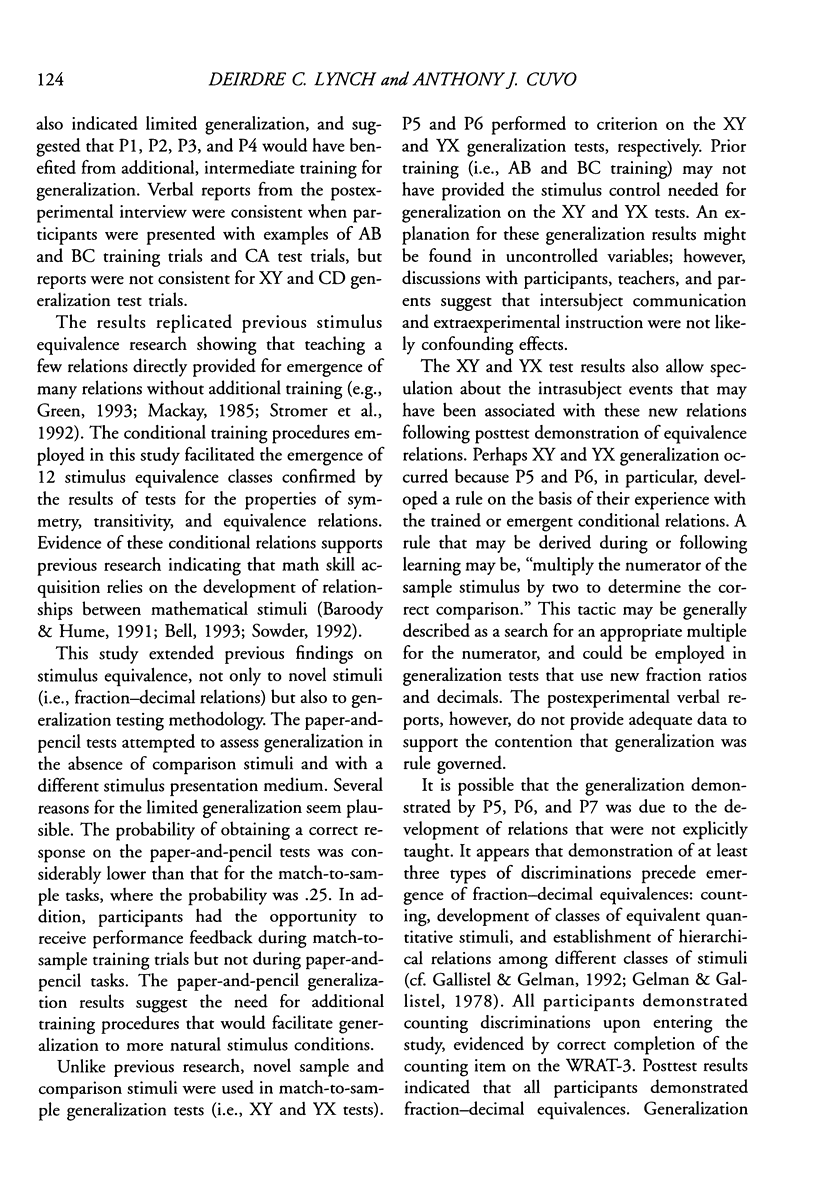
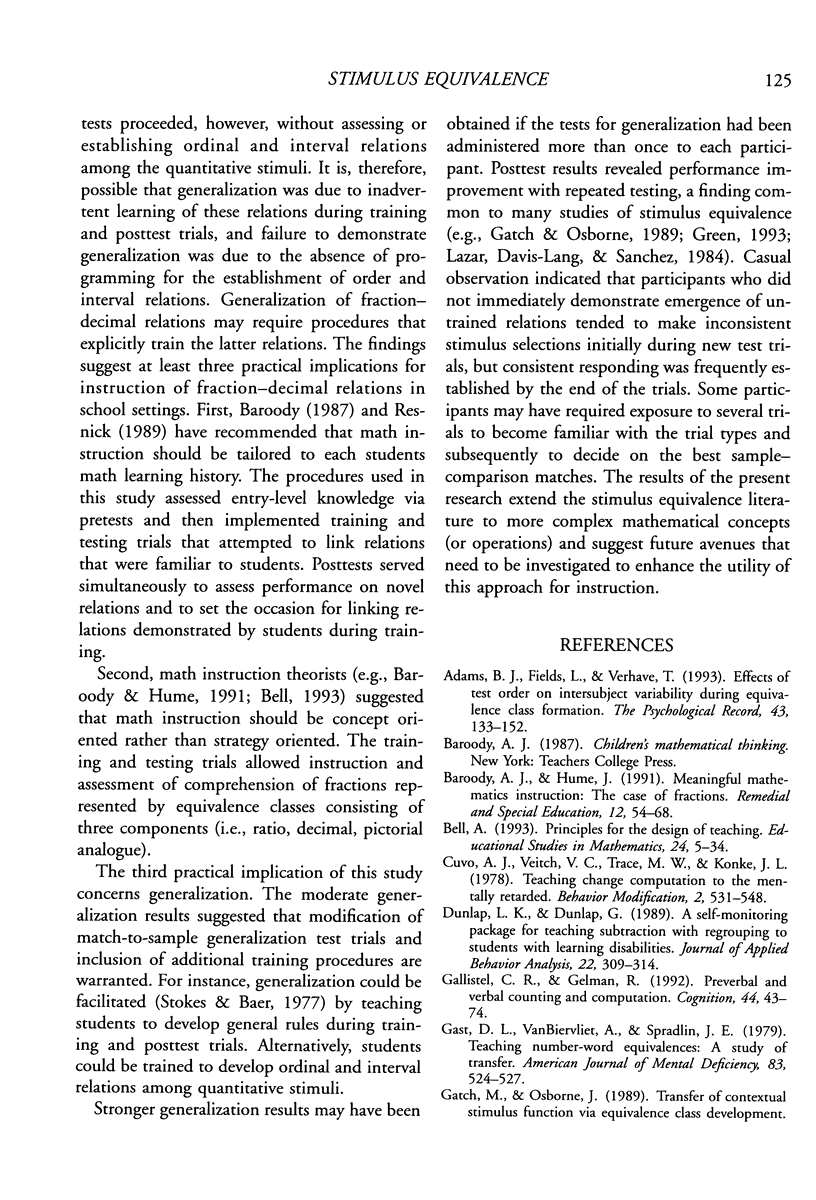
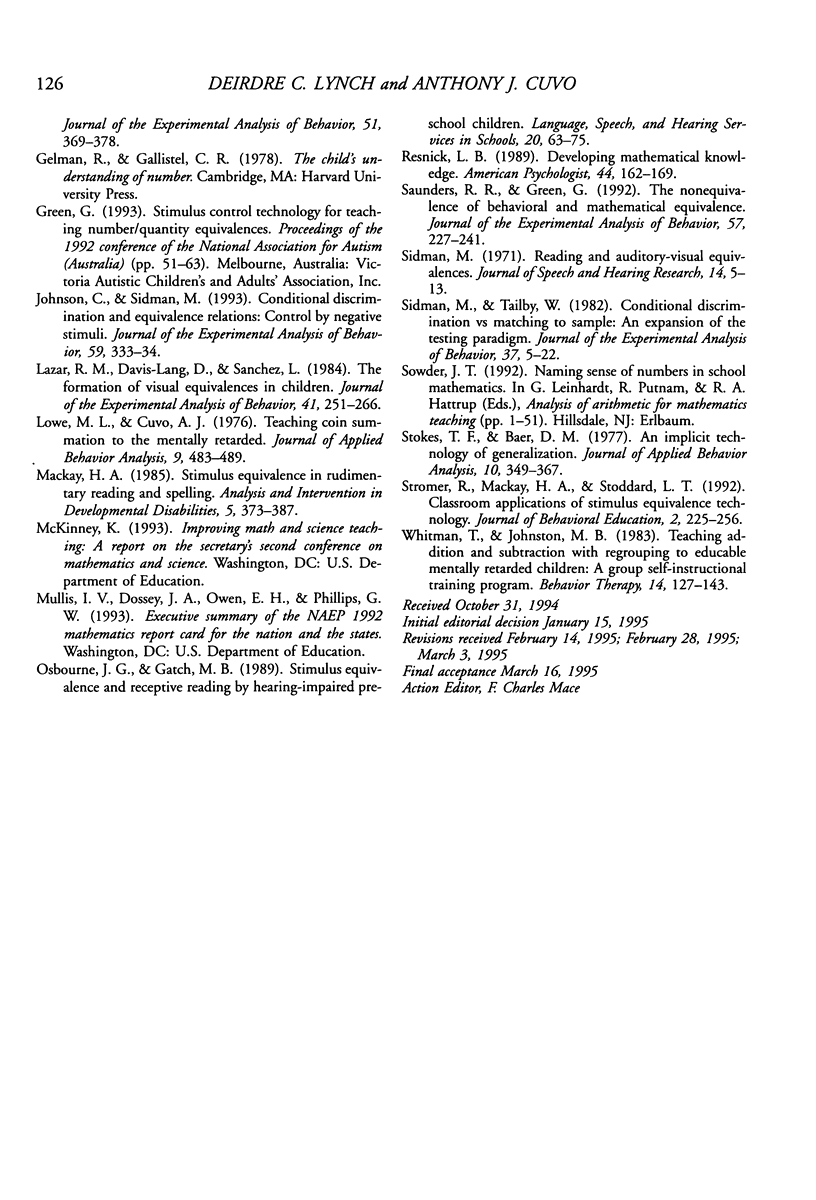
Selected References
These references are in PubMed. This may not be the complete list of references from this article.
- Dunlap L. K., Dunlap G. A self-monitoring package for teaching subtraction with regrouping to students with learning disabilities. J Appl Behav Anal. 1989 Fall;22(3):309–314. doi: 10.1901/jaba.1989.22-309. [DOI] [PMC free article] [PubMed] [Google Scholar]
- Gallistel C. R., Gelman R. Preverbal and verbal counting and computation. Cognition. 1992 Aug;44(1-2):43–74. doi: 10.1016/0010-0277(92)90050-r. [DOI] [PubMed] [Google Scholar]
- Gast D. L., VanBiervliet A., Spradlin J. E. Teaching number-word equivalences: a study of transfer. Am J Ment Defic. 1979 Mar;83(5):524–527. [PubMed] [Google Scholar]
- Gatch M. B., Osborne J. G. Transfer of contextual stimulus function via equivalence class development. J Exp Anal Behav. 1989 May;51(3):369–378. doi: 10.1901/jeab.1989.51-369. [DOI] [PMC free article] [PubMed] [Google Scholar]
- Johnson C., Sidman M. Conditional discrimination and equivalence relations: Control by negative stimuli. J Exp Anal Behav. 1993 Mar;59(2):333–347. doi: 10.1901/jeab.1993.59-333. [DOI] [PMC free article] [PubMed] [Google Scholar]
- Lazar R. M., Davis-Lang D., Sanchez L. The formation of visual stimulus equivalences in children. J Exp Anal Behav. 1984 May;41(3):251–266. doi: 10.1901/jeab.1984.41-251. [DOI] [PMC free article] [PubMed] [Google Scholar]
- Lowe M. L., Cuvo A. J. Teaching coin summation to the mentally retarded. J Appl Behav Anal. 1976 WINTER;9(4):483–489. doi: 10.1901/jaba.1976.9-483. [DOI] [PMC free article] [PubMed] [Google Scholar]
- Saunders R. R., Green G. The nonequivalence of behavioral and mathematical equivalence. J Exp Anal Behav. 1992 Mar;57(2):227–241. doi: 10.1901/jeab.1992.57-227. [DOI] [PMC free article] [PubMed] [Google Scholar]
- Sidman M. Reading and auditory-visual equivalences. J Speech Hear Res. 1971 Mar;14(1):5–13. doi: 10.1044/jshr.1401.05. [DOI] [PubMed] [Google Scholar]
- Sidman M., Tailby W. Conditional discrimination vs. matching to sample: an expansion of the testing paradigm. J Exp Anal Behav. 1982 Jan;37(1):5–22. doi: 10.1901/jeab.1982.37-5. [DOI] [PMC free article] [PubMed] [Google Scholar]
- Stokes T. F., Baer D. M. An implicit technology of generalization. J Appl Behav Anal. 1977 Summer;10(2):349–367. doi: 10.1901/jaba.1977.10-349. [DOI] [PMC free article] [PubMed] [Google Scholar]


